3 Best Insoles for Preventing Shin Splints
Updated December 9, 2024.

Musculoskeletal injuries come in all shapes and degrees of severity. Sometimes, the size of the injury doesn’t correspond with the severity of the condition or the intensity of the pain, as is the case with shin splints.
This common overuse injury causes pain along your shin bone. Though a small injury, shin splints can be painful enough to keep you away from your favorite physical activities.
3 Best Insoles Against Shin Splints from Upstep
- Best Running Insoles for Shin Splints: Running Custom Orthotics
- Best Insoles for Flat Feet and Shin Splints: Flat Feet Custom Orthotics
- Best Athletic Insoles for Shin Splints: Multi-Sports Custom Orthotics
What Causes Shin Splints?
A shin splint is a repetitive stress injury affecting the shin bone and the tissues that connect muscles to the bone, causing pain along the entire length of the shin bone. Other symptoms include decreased range of motion, stiffness, tingling sensations, and balance problems.
When the leg muscles contract, they pull on the shin bone through the layer of connective tissue called the periosteum. With overuse, the biomechanics alter, and the normal pull causes damage to the periosteum. The body’s inflammatory response to this injury results in an array of symptoms, especially pain, which is then termed shin splints.
While the general cause of shin splints is overuse, some specific shin splints causes and risk factors include:
- A sudden increase in exercise intensity
- Flat feet and overpronation
- Calf muscle tightness
- Running on uneven, hard, or sloping surfaces
- Poor running form
- Unsupportive footwear
» Discover more causes of shin splints and how to treat them
Preventing Shin Splints
Luckily, you can take steps to prevent shin splints. Some of the most effective ways to do so include:
- Wearing properly fitting and supportive footwear
- Using shock-absorbing insoles to limit the impact on your shins
- Warming up before exercise
- Stretching your calf muscles
- Avoiding sudden increases in exercise intensity
- Not exercising on uneven and hard surfaces
- Improving your exercise technique
- Using insoles to prevent shin splits
3 Best Insoles for Relieving Shin Splints Pain
Wearing the right insoles can help prevent shin splints and relieve shin splints pain. Our recommendation for the best insoles for shin splints are Upstep's Custom Orthotics, which are designed to fit your individual requirements using the best quality materials.
1. Best Running Insoles for Shin Splints

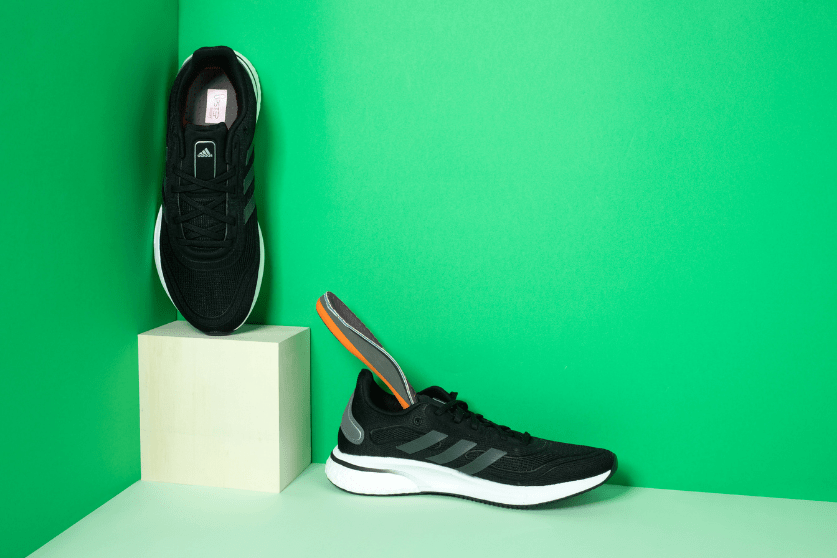
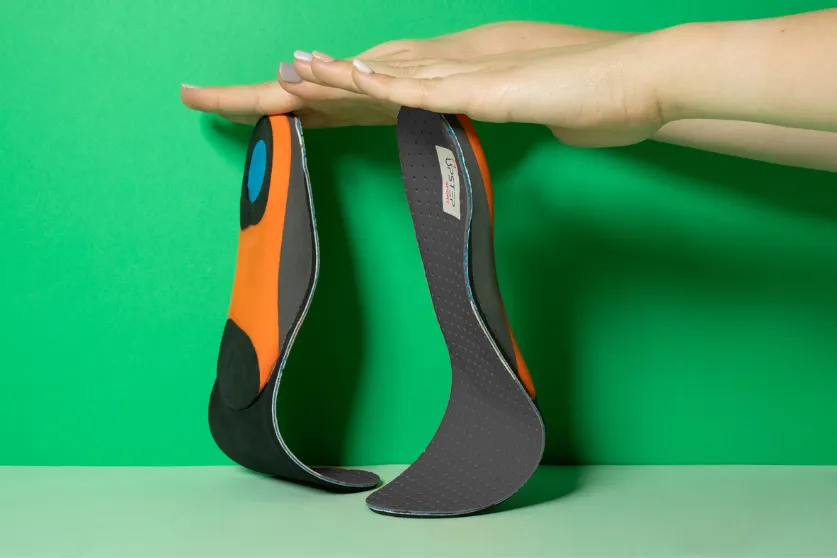
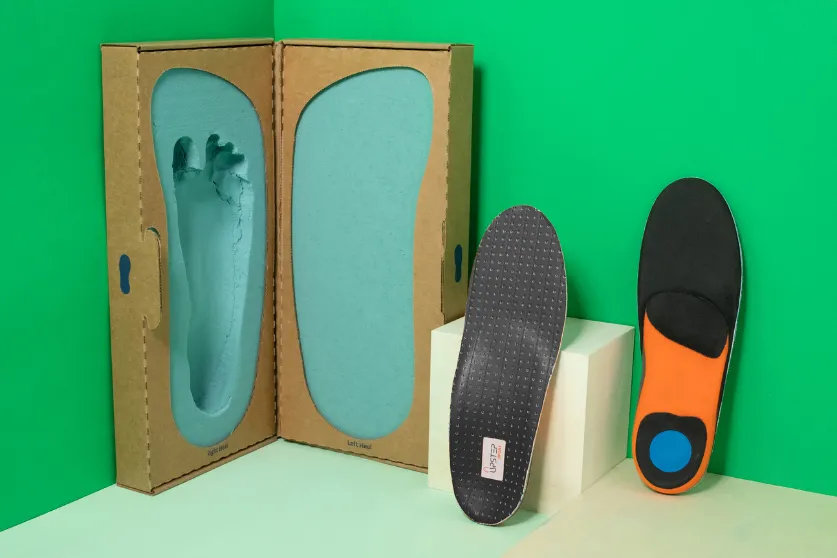

- FSA and HSA eligible
- Free shipping and returns
- Custom-designed for running
Frequent running can easily lead to overuse, which is why this is one of the main causes behind shin splints. Acting as shock absorbers that minimize the impact of running on the leg, Upstep's Running Custom Orthotics support your feet and keep them comfortable while ensuring optimal energy transfer during movement.
Pros
- Made from durable materials
- Directly address foot pain
- 180-day money-back guarantee
Cons
- Short waiting period before receiving orthotics
2. Best Insoles for Flat Feet and Shin Splints


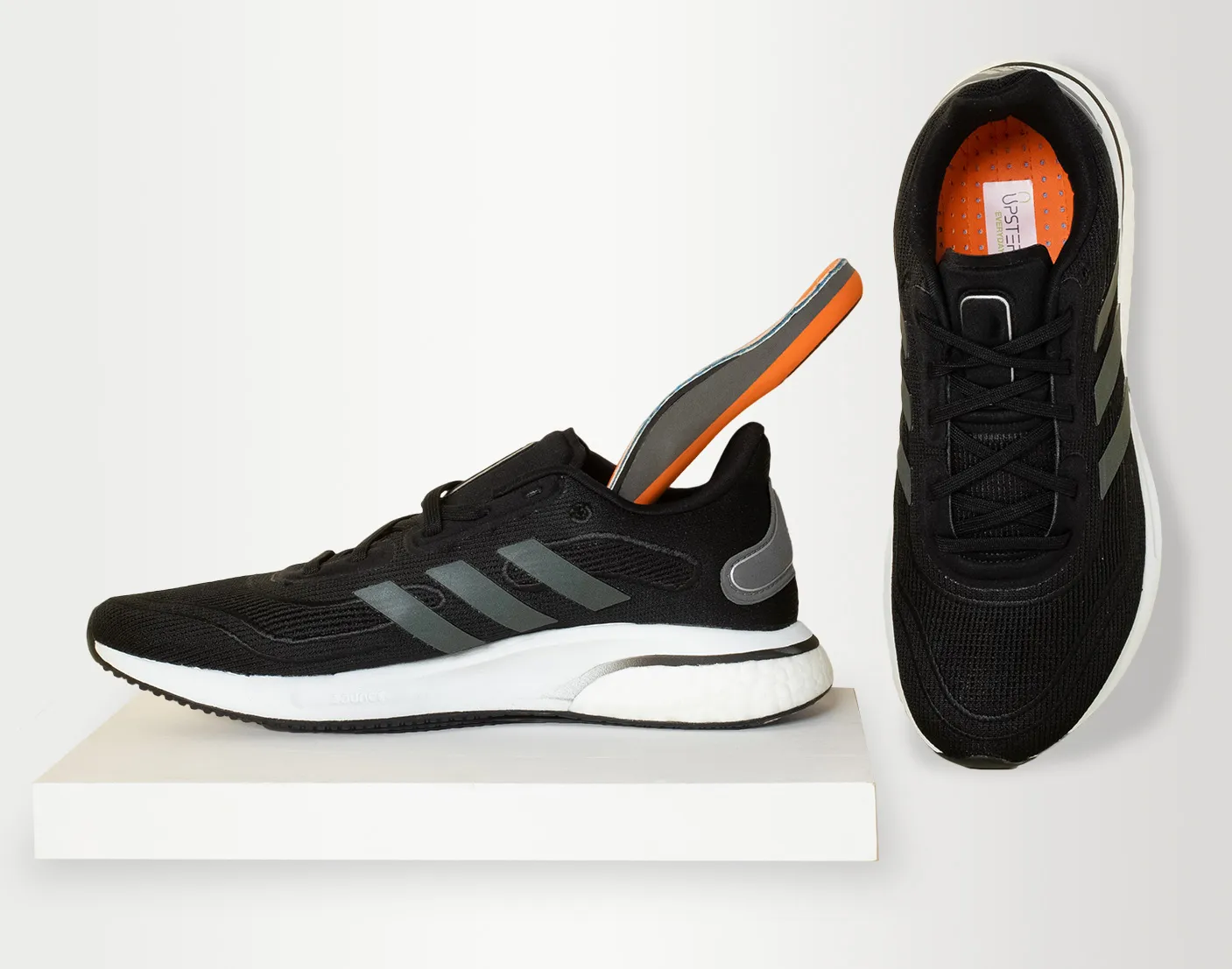
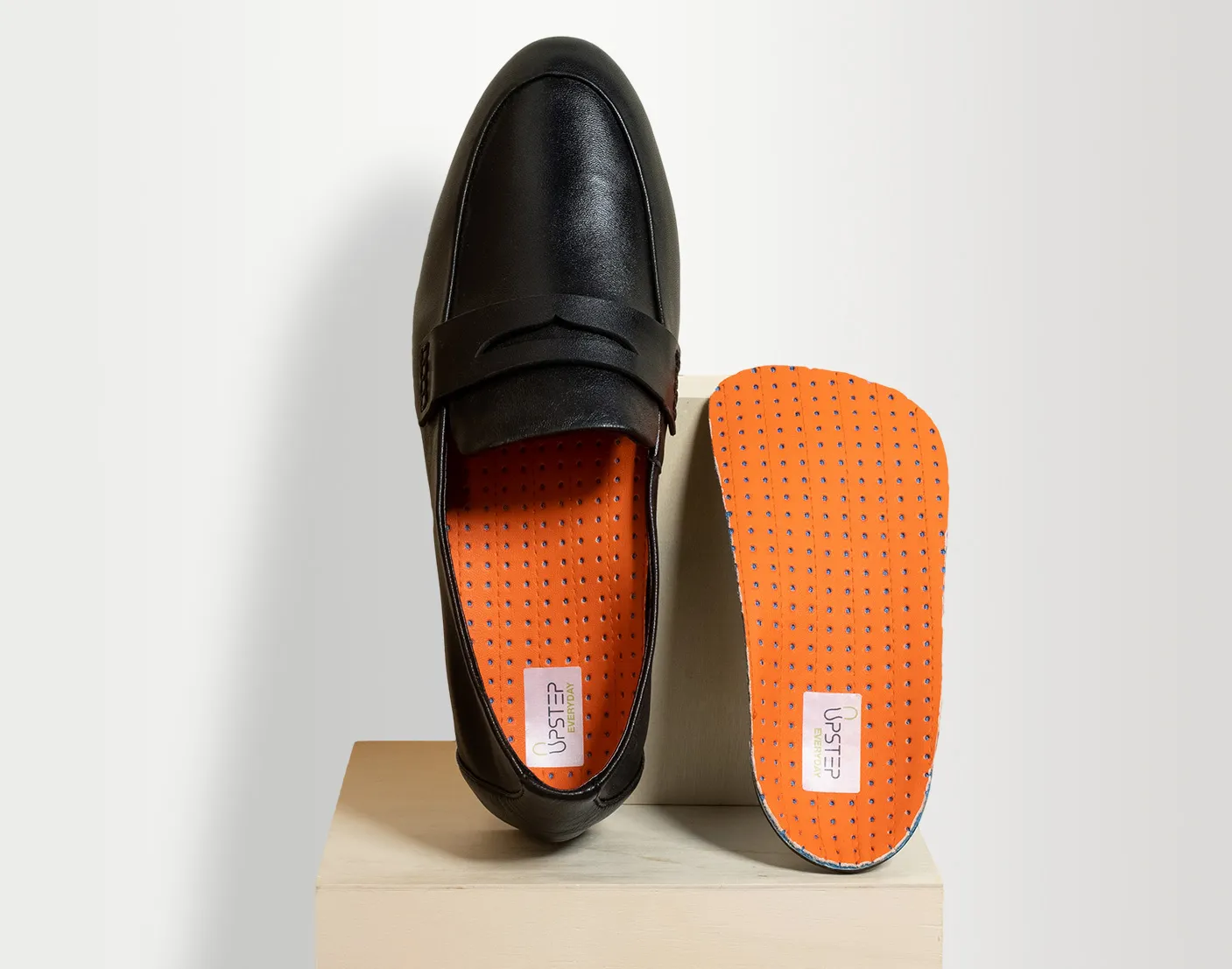

- FSA and HSA eligible
- Ideal for overpronation
- Free shipping and returns
Flat feet can lead to overpronation, which contributes to painful shin splints. To avoid this problem at its root, Upstep's Flat Feet Custom Orthotics provide a long-term solution for your flat feet and reduce the discomfort of overpronation.
Pros
- Custom-made by podiatrists
- High arch support
- Deep heel cup
- Reduce stress on the knees, heels, and back
- 180-day money-back guarantee
Cons
- Short waiting period before receiving orthotics
3. Best Athletic Insoles for Shin Splints





- FSA and HSA eligible
- Free shipping and returns
- Custom-made for athletic activities
Intense physical activity significantly increases the risk of shin splints, making this condition more common in athletic people. To help you enjoy your sporty activities without the risk of causing shin splints, Upstep's Multi-Sports Custom Orthotics are designed to absorb impact, reduce the risk of injury, and support and improve the shape of your foot while you're active.
Pros
- Improve the foot's function
- Provide layers of cushioning materials
- Absorb impact
- Reduce injury
- 180-day money-back guarantee
Cons
- Short waiting period before receiving orthotics
Picking the Right Shoe for Shin Splints
While very helpful, using insoles for preventing shin splits often isn't enough to keep this problem at bay. You also need to choose the right shoes for shin splints to complement the insoles and help guarantee the best possible results. When choosing a shoe for shin splints to support insoles, look for the following features:
Adequate Support
Worn-out shoes and shoes that provide inadequate support place more stress on your feet and shins. Instead, choose a shoe with adequate cushioning and sturdy support to make walking as comfortable as possible.
Custom Shin Support
Since custom insoles are the primary solution for shin splints, you must choose a shoe that allows you to use custom insoles. By combining the shoe and insole effects, you can guarantee better biomechanics, stability, durability, comfort, shin and feet support, and pain relief.
Fashionable
The leading reason for inconsistency in wearing medical shoes is that they're often not fashionable. Choosing a quality shoe that also looks good will allow you to stay stylish while obtaining the benefits of a medical shoe. This will let you wear your medical orthotics more regularly, helping you get faster results.
» Take a look at the best insoles for flat feet to prevent pain and provide support
Prevent Shin Splints and Manage Pain With the Right Insoles
Although a small injury, shin splints can feel disproportionately painful and interfere with your everyday activities. In addition to avoiding shin overuse, you can avoid this painful condition by choosing the best insoles for preventing shin splints.
Upstep's Custom Orthotics are custom-designed not only to prevent shin splints but also to reduce the pain resulting from this injury. These insoles also provide steady support for your foot arch, keep your feet comfortable, and maintain natural leg alignment during motion.








